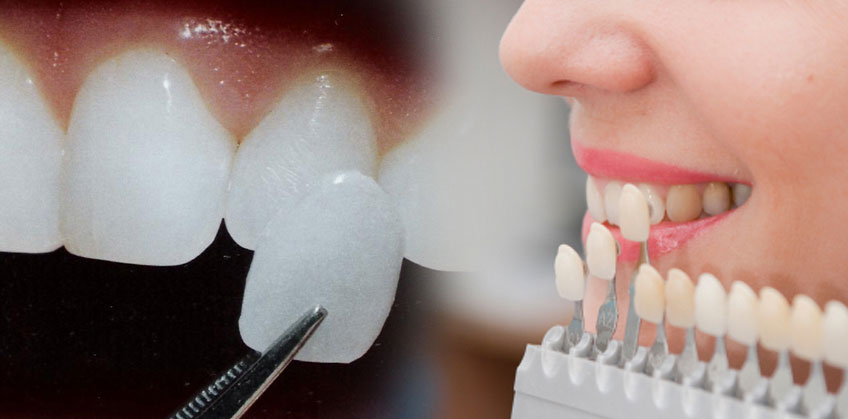Your smile and teeth are an important feature for an introduction or an interview for a job, especially a job that is in front of people.
And, of course, a beautiful smile does enhance an individual's appearance and improves one's self-confidence. So what happens when you don't like the color, size and shape of your teeth? Many individuals are now looking toward composite (direct) veneers or porcelain (indirect) veneers.
First of all, let me say that most of those beautiful smiles you see on your favorite actors or television personalities are most likely veneers. Veneers can give most any mouth an almost perfect smile.
So what is a veneer? Dental veneers are thin shells of tooth-colored material placed over the surface of the teeth to improve an individual's appearance. They are a beautiful piece of artistic engineering for the mouth.
There are basically two types of veneers: porcelain veneers, which are very thin custom-made shells of porcelain that require two appointments with your dentist; and composite veneers, often called bonded veneers, which can be provided in a single appointment. Your dentist will provide you with the best option of veneer based on your teeth and ultimate goals.
Veneers can be costly, but the results can be life-changing. I literally have had patients weep after the transformation of their smile, which brings great joy to me as a dentist. (I don't believe they were crying over their dental bill.) The cost of veneers depends on your region, the skill level of your cosmetic dentist, the quality of the lab used and what type of veneer you choose. Generally, porcelain veneers range from $900 to $2,500 per tooth and should last 10 to 15 years or more. Composite veneers are considerably lower in cost, usually about $250 or more per tooth, but do not last as long.
All veneers are bonded or glued to the front of the teeth, ultimately changing the color, size, shape and/or length. Porcelain veneers resist staining better than composite veneers and also mimic the light-reflecting properties of natural teeth better. As for bonded veneers, this procedure involves the application of a bond and enamel resin to the tooth's surface and entails less removal of tooth surface than a porcelain veneer, which is a plus.
What types of problems do dental veneers fix? Veneers help to fix teeth that are discolored where whitening does not work. Furthermore, those who have worn-down, chipped, broken, irregularly shaped or misaligned teeth or gaps betweeen teeth are candidates for veneers. Sometimes the transformation is simply amazing.
The first step in achieving a new smile with veneers is a consultation with your dentist. X-rays, impressions and digital photos of your mouth and teeth may be required. The initial visit for porcelain veneers involves reducing the tooth or teeth involved and taking an impression to send to the lab for fabrication. This type of veneer is strong and very durable.
The longevity of a veneer - whether porcelain- or composite-based - will depend on the amount of clenching, grinding or wear is placed on the teeth. Avoid biting your nails or chewing on pencils, ice or other hard objects or anything that will put pressure on your veneered teeth. Wearing a night guard or occlusal guard helps protect the veneers and prevent wear and breakage.
Veneers are thin and usually require about 0.5 to 1.0 millimeter of tooth reduction. Sometimes a reduction of 1 to 2 millimeters may be required to allow for more drastic changes. If porcelain veneers are to be fabricated, temporary veneers will be placed and worn until the permanent ones are ready. Usually the turnaround is about two weeks.
Communication between you and your dentist important so that you will achieve your desired cosmetic smile. Some people who alter their smiles need some time to get used to the new size, shape, length and contours of the veneered teeth. Maintenance with good oral hygiene, including proper brushing and flossing, is important.






